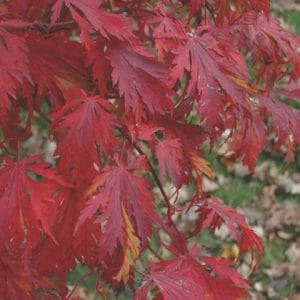 Set your fall landscape ablaze with color. Planting trees, shrubs or even perennials adds welcome color to your fall landscape.
Set your fall landscape ablaze with color. Planting trees, shrubs or even perennials adds welcome color to your fall landscape.
Create a colorful canopy by adding sourwood trees. Sourwood can reach heights of 30 feet while providing several seasons of color.
The orange fall color of paperbark maples complements its reddish brown exfoliating bark. Use it as a single specimen tree or in small groupings for maximum enjoyment.
If raking leaves is not your favorite pastime, consider growing a ginkgo tree. The beautiful fan-shaped leaves turn a clear yellow in the fall. Once the leaves start falling, they all drop in a day or two.
Shrubs are great options for small-space gardeners or those looking to add fall color at eye level. The common witch hazel leaves turn yellow in the fall and as they drop, they reveal the fragrant yellow blooms, leaving an unexpected pleasure.
Whether large, small, weeping or spreading, there is a crab apple tree suited to most landscapes. As the leaves turn yellow and drop in the fall, the fruit take centerstage. As the fruit soften over the winter, the birds move in, adding color and motion to your landscape.
Don’t forget to add a bit of color at ground level. Bergenia is a four-season perennial with white or pink spring flowers. The large leaves turn bronze, wine or deep crimson and persist through the winter.
Also look for fall bloomers. Asters and mums are traditional favorites, but there are many more to consider. The small orchid-like flowers of the toad lily line the stems or top the branches, while the delicate blooms of Japanese anemone rise above the rosette of leaves. Both are sure to amaze your visitors.
Take a bit of time to enjoy this colorful season and plan to add fall color, from the ground up, in your landscape.
Gardening Expert Melinda Myers